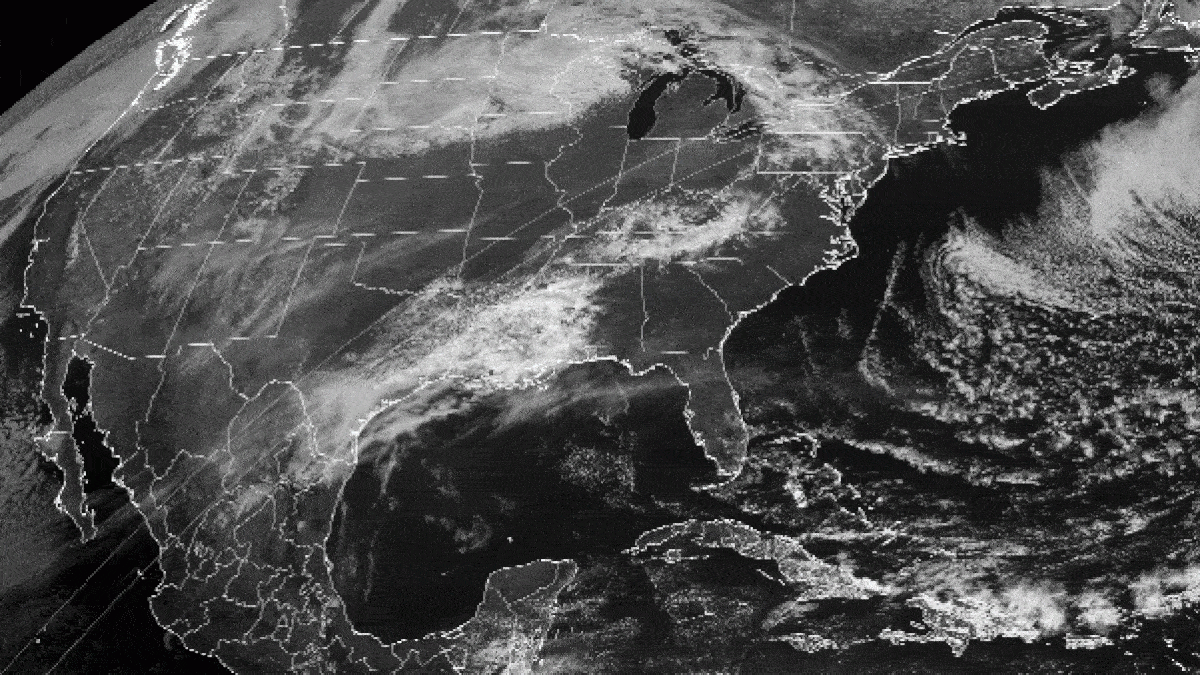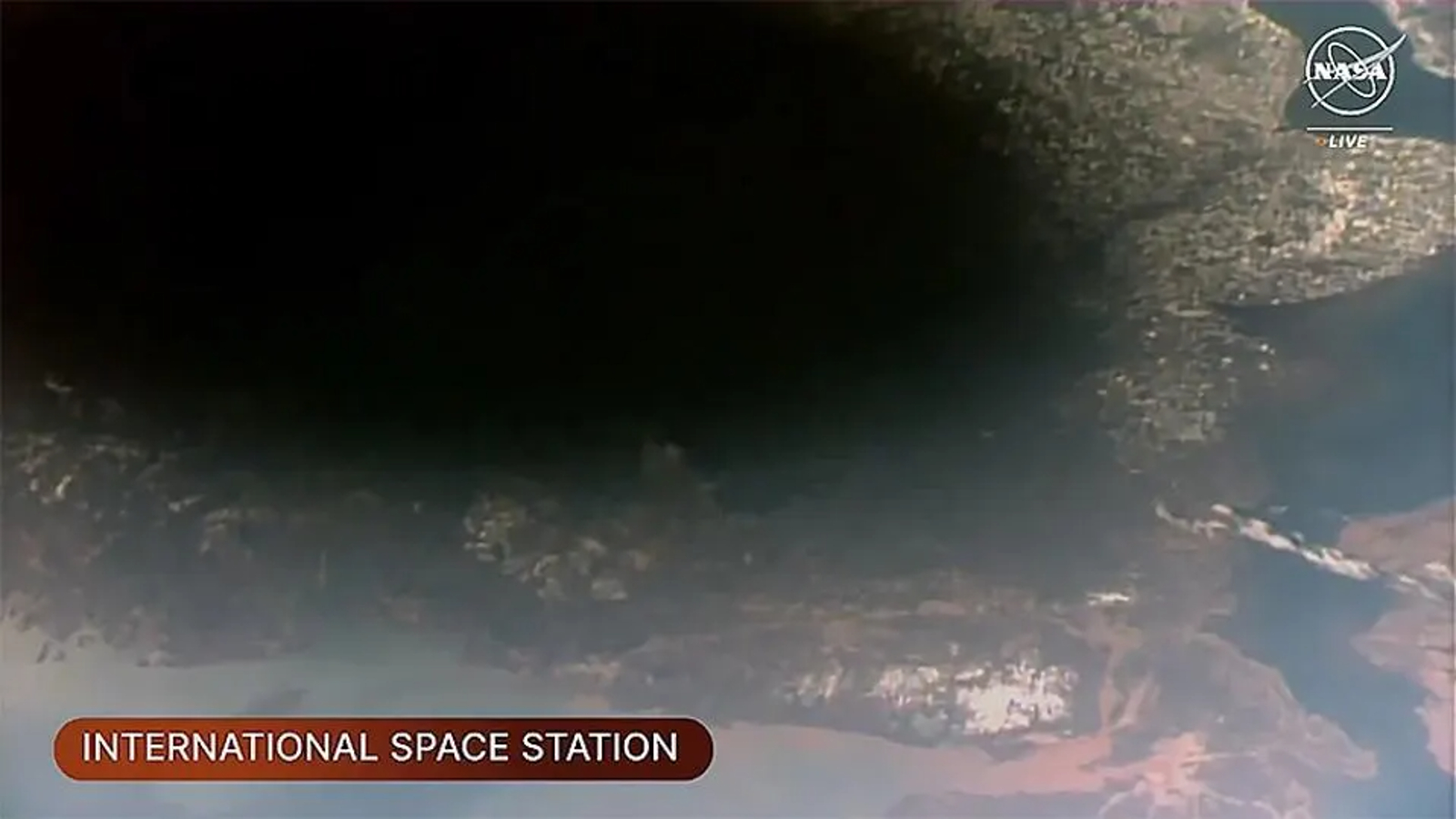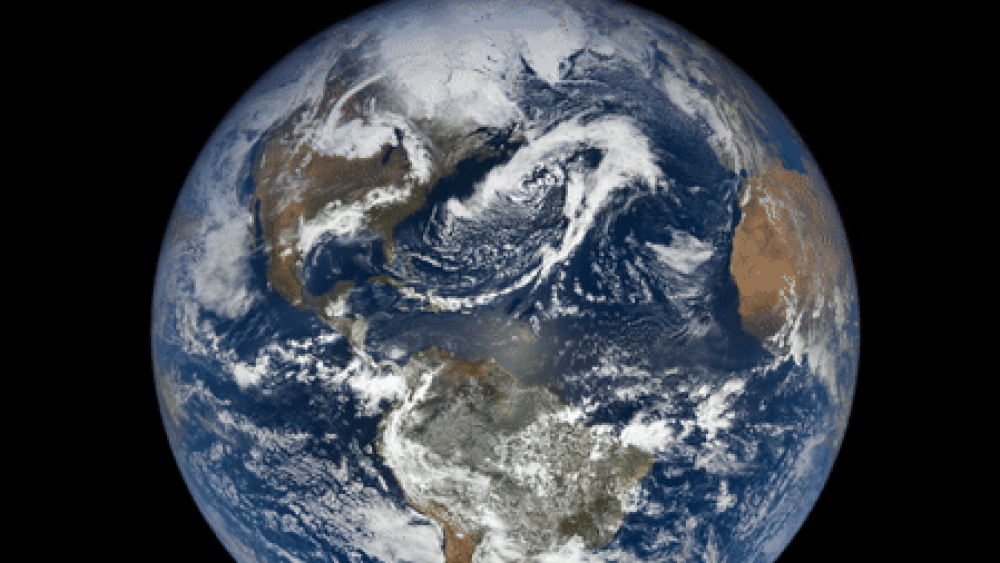
Eerie new satellite images show the moon's gigantic shadow racing across North America during the April 8 total solar eclipse. Photos captured by astronauts on board the International Space Station (ISS) also highlight the mind-boggling scale of this rare cosmic event.
On Monday (April 8), millions of people along or near the path of totality watched the moon temporarily block out our home star as its shadow swept across North America from Mexico to Canada. During this event, totality — the period where the sun is completely obscured — lasted up to 4 minutes and 28 seconds, depending on the viewer’s location.
Despite some adverse weather conditions and an uncharacteristically inactive sun, observers were able to capture stunning images of the eclipse from the ground. Some people were even lucky enough to catch glimpses of rare phenomena including slithers of sunlight known as "Baily's beads" and plasma eruptions from the sun, known as solar prominences. But from space, the event was arguably even more impressive.
The National Oceanic and Atmospheric Administration's (NOAA) 16th Geostationary Operational Environmental Satellite (GOES-16) took thousands of photos of the eclipse from its fixed position above North America. When these images were stitched together, they showed the moon's shadow sweeping across the continent, Spaceweather.com reported.
The resulting footage looks like something straight out of a sci-fi film.
"The Moon's shadow raced across North America faster than 1,500 mph [2,400 km/h], creating a mind-altering cone of darkness," Spaceweather.com wrote.
Related: When is the next total solar eclipse after 2024 in North America?

Astronauts on board the ISS also watched the eclipse from their unique viewpoint, and a member of the Expedition 71 crew captured a striking shot of the moon's shadow from around 260 miles (418 kilometers) above Earth, NASA reported. At this point, the dark void was passing from New York state into Newfoundland, Canada.
The ISS photo was no accident. NASA had been gradually maneuvering the space station for months so that it would pass through the eclipse, while also making sure the orbiting station avoided space junk. In the end, the ISS experienced a totality of around 90%, according to NASA.
However, astronauts were unable to take photos of the actual eclipse because the windows facing the sun, which are located in the Roscosmos section of the station, were inaccessible due to "cargo constraints," NASA representatives wrote.

The gigantic dark patch was also spotted by one of SpaceX's Starlink satellites during the eclipse.
The moon's shadow is often referred to as the umbra, which is Latin for shadow. However, an umbra is just the darkest part at the heart of the moon's shadow. Our natural satellite's shadow also contains two other parts: the penumbra, where only part of the sun is covered; and the antumbra, where a fainter shadow is cast across a wider radius.
Observers located in the path of totality were temporarily covered by a true umbra, but anyone who experienced a darkened sky outside of this route was experiencing a penumbra or antumbra. This is why the moon's shadow appears much wider than the path of totality in the new images.
If you missed the eclipse, don't worry, it is still possible to rewatch NASA's live stream of the event.








